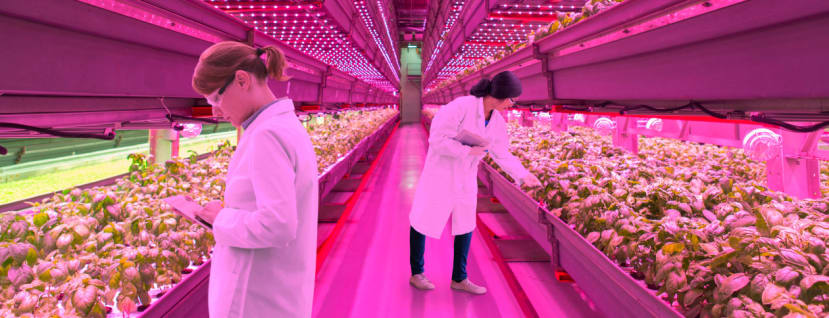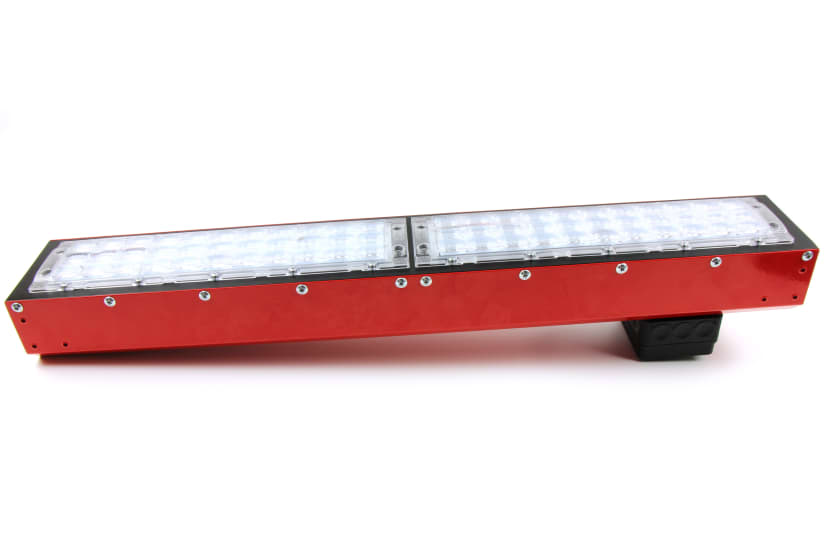Vertical farming - Where to start?
Follow articleHow do you feel about this article? Help us to provide better content for you.
Thank you! Your feedback has been received.
There was a problem submitting your feedback, please try again later.
What do you think of this article?
Vertical farming involves growing and producing crops, typically indoors, on multiple levels. It is made possible through the advancements in LED technologies. More growers are considering vertical farms and LED solutions due to their sustainability and efficiency. Through vertical farming, harsh weather conditions can be avoided, and all-year-round growing is possible.
LEDs are a cost-effective and efficient system to implement within a vertical farm due to their long lifetimes and small size. Choosing the correct LEDs will enable optimal power, even within the confined spaces in a vertical farm. As LEDs emit less heat than other lighting systems such as high-pressure sodium (HPS) lamps, they are less likely to cause any negative side effects such as damage through high heat exposure.
Vertical farms have many variables which all need considering in order to make them successful. LED selection is key, but not the only key factor. You first need to understand and establish the requirements of your crop. From here you will then be able to create the appropriate growing environment.
Creating an ideal climate.
Humidity and airflow in a vertical farm are vital to plant productivity, crop quality, harvesting schedules, and inevitably, the profitability of the crop. Through the implementation of electrical systems, it can be assumed that about 50% of the electrical input power is converted into light output. Leaving the remaining 50% being converted into heat. Therefore, heat control is needed. This can be through airflow and/or other cooling systems. Good air circulation and ventilation can help keep temperature and humidity under control. Dispersing heat from LED systems will also help to create uniform conditions throughout your vertical farm. For example, using fans positioned incrementally within racks can boost and evenly distribute airflow from one end to the other. This can also effectively mix cooler air near the floor with warmer air nearer the ceiling, to prevent a stack effect. Not considering climate control and implementing a suitable airflow system in your vertical farm may decrease quality and plant yields.
Selecting the optimum LED lighting.
Once you have an appropriate climate, how can you get the highest yields from it? LED grow lights are available in numerous assorted sizes and wavelengths. Different plants will require different spectral outputs for optimum growth. The requirements of plants can also shift during various stages of a plant's lifecycle. For example, during vegetative growth typically blue wavelengths are preferable. Whereas during flowering stages, red wavelengths are key.
Another important consideration is ensuring the light output is uniform. Uniform coverage is achieved by how the light is positioned and directed. The correct LED grow light will provide wide and even coverage. If the light output is uneven, crops grown will also be uneven.
Spacing crops appropriately.
To achieve uniformity, plants also need to be spaced appropriately. By ensuring no overcrowding, each plant can receive an optimal and even amount of light. Furthermore, by making sure plants are not spaced too far apart, energy will not be wasted by lighting the spaces in between and the plants will remain the focus of the light output. Over-spacing plants will result in decreased efficiency.
Irrigation systems.
Water is another essential element to growing plants. Water delivers vital mineral nutrients and food to plants and therefore choosing the most suitable system for your crop is important. Water demand, as with light, will vary depending on plant types and stages. Therefore, irrigation in a vertical farm should be frequently monitored and adjusted when needed. When implemented correctly, irrigation can improve plant growth rates and protect plants from diseases.
- Drip: Ideal for conserving water, a micro-irrigation system that delivers water to plants by slowly dripping directly to the root of the plants.
- Nutrient film technique: A hydroponic technique which constantly circulates nutrient-rich water past the plant roots via channels.
- Flood and drain: This system periodically floods plant roots and then drains the fluids away.
- Deep water culture: A hydroponic farming method through which plant roots are constantly suspended in nutrient-rich water.
What LED lighting products are available?
Florence LED Grow Lights: designed for low and no-sunlight applications, maximising growth potential whilst minimising both initial purchase costs and ongoing running costs.



